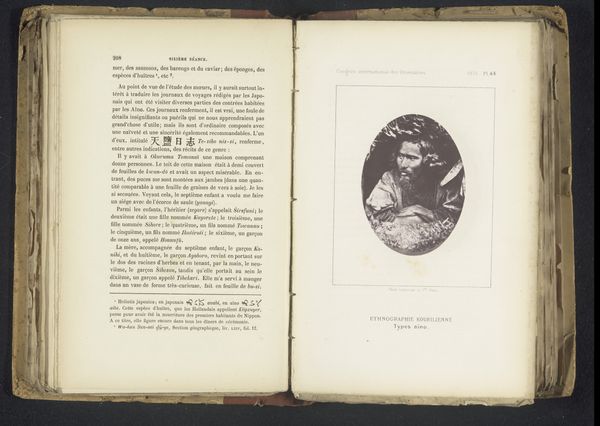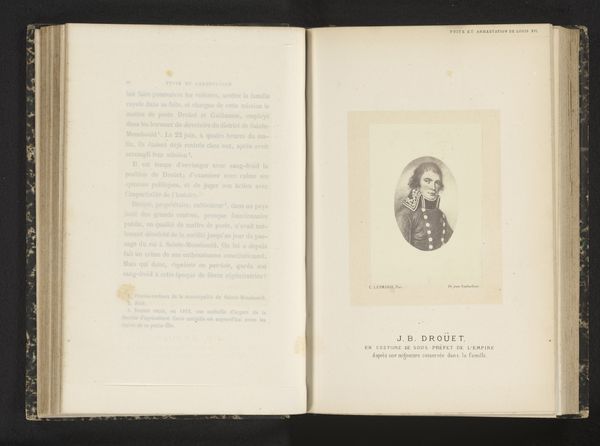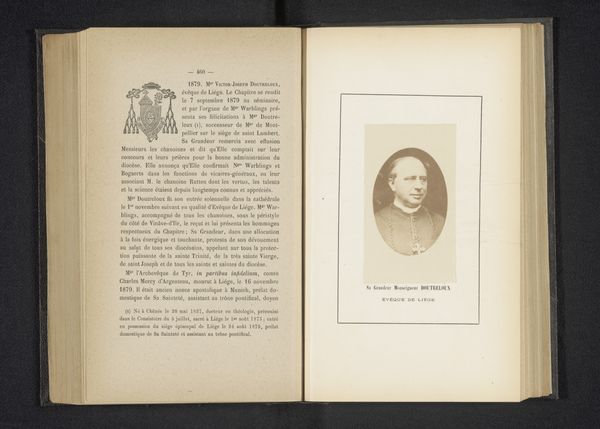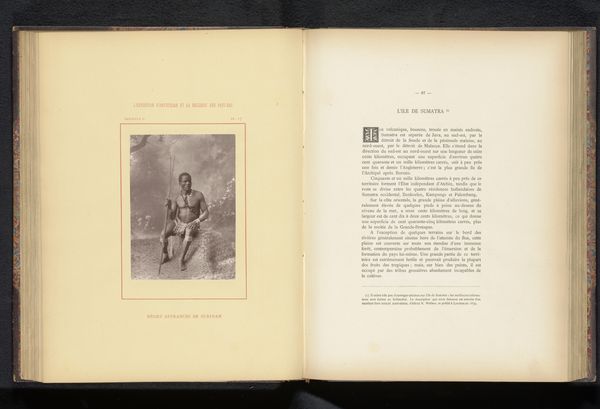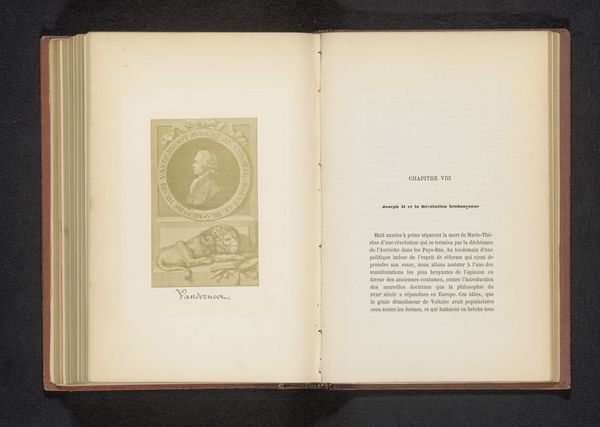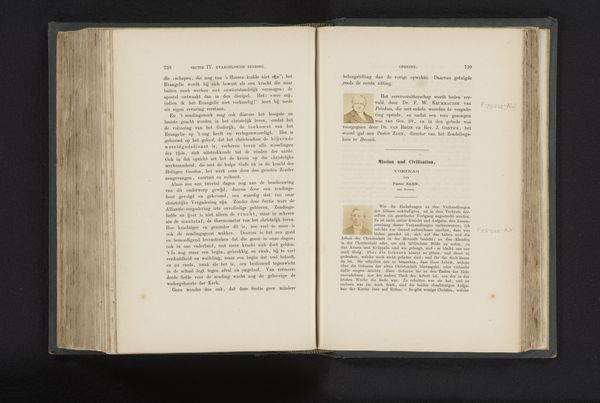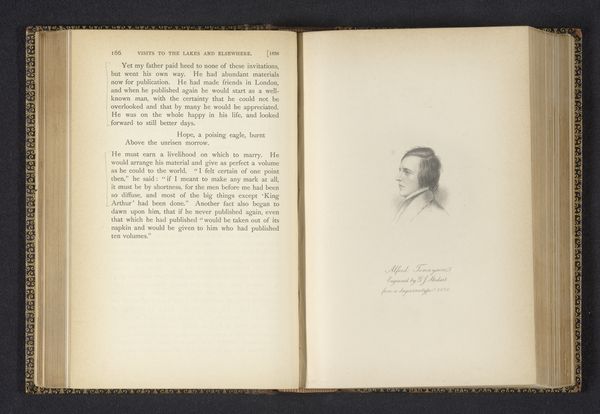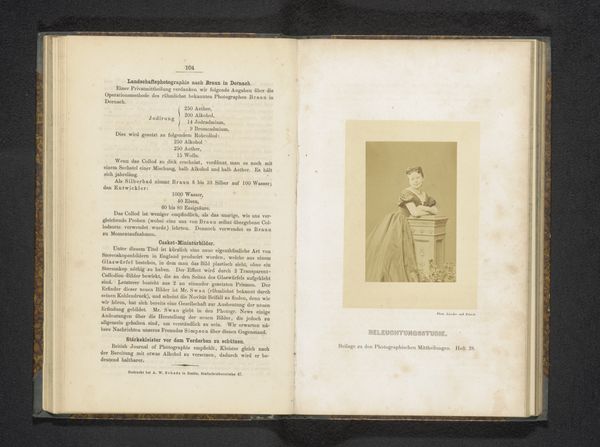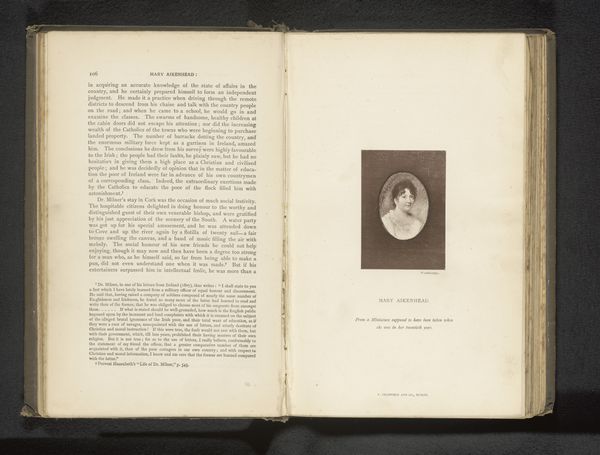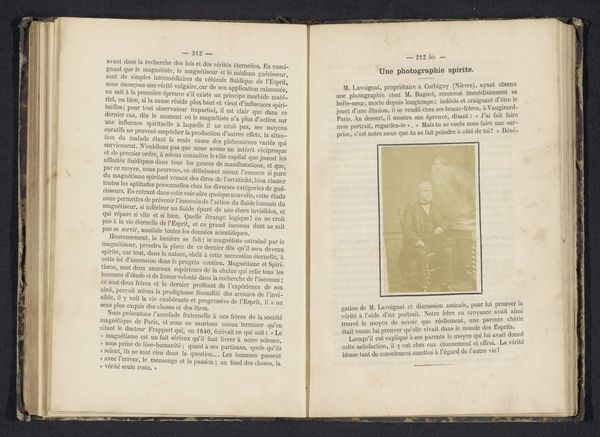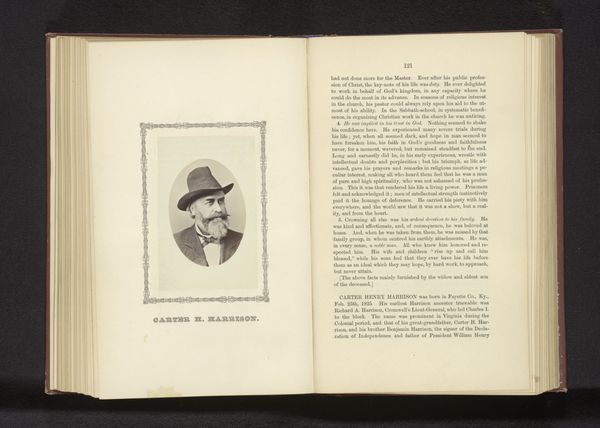
photography, albumen-print
#
portrait
#
photography
#
academic-art
#
albumen-print
Dimensions: height 94 mm, width 65 mm
Copyright: Rijks Museum: Open Domain
Curator: This is an albumen print depicting Henry B. Carrington. It appears to date from before 1881, judging by the inscription and photographic style. The portrait, framed within a decorative border, presents a stern, uniformed figure. What strikes you first about it? Editor: My immediate impression is the weight of historical context bearing down. That formal pose, the meticulous military garb...it speaks of power, of a certain rigidity. The dark tones and the oval frame contribute to this sense of bygone era, heavy with social expectations. Curator: Absolutely. The albumen print itself is fascinating. It’s a process involving coating paper with egg white to create a smooth surface for the silver salts. It allows for a very detailed image, almost painterly in its effect here. Consider the labor involved: the preparation of the paper, the meticulous printing, the fixing and washing, not to mention the book-binding. The physical object speaks volumes about the means of photographic production at that time. Editor: Precisely, and we can't separate that materiality from the social conditions. This isn't just any soldier. Carrington was involved in violent displacement of Native Americans in the West. Viewing it today demands an awareness of those power dynamics and histories of violence which produced a subject with the status and means for formal portraiture. How do we contend with the image as historical document and propaganda? Curator: That's the challenge, isn't it? Understanding the confluence of technology, labor, and socio-political context that brought this image into being. The academic style in this photograph adheres to established portraiture, further indicating Carrington's status, emphasizing his social standing and perpetuating the power structure of the day. Editor: Indeed. We are called to witness not only the image, but also the context of violence from which it arose, and from whose consequences, perhaps, we’re not so separate from, either. These images served to uphold status in society for certain groups while reinforcing cultural notions of hierarchy. Curator: So while appreciating the craftsmanship and technical accomplishment of the albumen print, we must equally reckon with its implications. Editor: This photograph compels us to grapple with this legacy, and perhaps consider more closely the ethics of portraiture, or consider its power relations and representation.
Comments
No comments
Be the first to comment and join the conversation on the ultimate creative platform.
